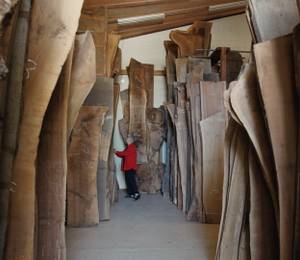New Delhi, India – Krushi Bhawan is a facility developed for Government of Odisha’s Department of Agriculture & Farmers’ Empowerment; the 130,000 square feet administrative centre has been designed as an office for a team of nearly 600 people, in addition to accommodating spaces for community engagement and learning.
Krushi Bhawan was originally planned as a purely administrative space. The architecture firm, Studio Lotus took a cue from Königsberger‘s original vision for Bhubaneswar where he saw the Capitol Complex with a host of government offices becoming “a lively point of public life”. Thus, the architects’ suggestion to include public functions and community spaces to create a building that would add to the city’s social infrastructure was willingly embraced by the Clients. This attempt to include the building into the public domain has been achieved by designing the Ground floor as a free-flowing public space that opens out into a Plaza, which is an extension of the street. Congruent to the project objective, the ground floor comprises of a learning centre, a gallery, an auditorium, a library, and training rooms. Similarly the roof top has been designed to house urban farming exhibits and demonstration of agricultural best practices.
The distinct visual identity of Krushi Bhawan has been derived from regional materials and vernacular narratives, expressed in a manner that is responsive to the local climate.
Over 100 highly-skilled artisans have come together to create a vibrant and contemporary narrative of traditional Odia craft depicting agricultural folklore and mythological stories, envisioned at an unprecedented architectural scale.
Indigenous passive design strategies contribute to the sustainability parameters of the building. The courtyard morphology and the inclusion of a stilt level aid optimal air circulation through the building, whereas the low window-to-wall ratio and deeply recessed windows and balconies help lower heat gain. Other interventions include solar panels on the terrace, on-site rainwater harvesting and wastewater treatment, and an anaerobic bio-digestive solid waste management system which generates compost and fertigation water for the landscape.












